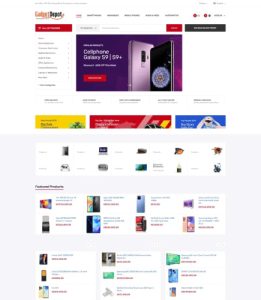Introduction
In today’s fast-paced educational environments, managing cafeteria services efficiently is crucial. Radio Frequency Identification (RFID) technology is revolutionizing how services are delivered, providing a seamless, automated experience. Here, we explore how to smartly integrate RFID technology into cafeteria operations at educational institutions.
What is RFID?

RFID, or Radio Frequency Identification, is a wireless communication technology that uses electromagnetic fields to identify and track tags attached to objects—including food items in cafeterias.
This technology is an advancement over Automatic Identification and Data Collection (AIDC) systems, offering a wireless solution that enhances operational efficiency.
Components of RFID
.

RFID Tags
These are small devices equipped with a microchip and antenna, storing data about the item to which they are attached.
RFID Reader
This device is the primary source of RF energy, used to activate and read the information stored in RFID tags without physical contact.
RFID Antenna
The antenna broadcasts radio waves that communicate between the tag and reader, facilitating the exchange of information.
Why Integrate RFID in Cafeterias?
RFID technology offers several advantages for cafeteria management:
- Eliminates the need for cash transactions.
- Allows for parental monitoring of student meals via SMS updates.
- Automates and improves accuracy in sales and inventory tracking.
- Reduces human error and administrative paperwork.
Building a Smart Cafeteria with RFID
Transitioning from traditional cash-based systems to an RFID-enabled cafeteria can dramatically improve both the efficiency and accuracy of service delivery. Here’s how it works:

- Tag Detection: As a student approaches the checkout, the RFID reader detects the tag associated with their account.
- Account Verification: The system verifies the student’s account details and balance.
- Order Processing: If the account has sufficient funds, the student can place their order.
- Insufficient Funds: If not, the system prompts a message to refill the account.
- Food Preparation: Simultaneously, the order details are transmitted wirelessly to the kitchen staff to prepare the meal.
Benefits of RFID in Cafeteria Management
- Reduced Errors: Automation minimizes the chances of human error in order processing.
- Inventory Management: Real-time tracking of stock levels ensures

- Faster Service: Streamlined transactions reduce wait times and improve customer satisfaction.
- Increased Productivity: Cafeteria staff can focus more on service quality rather than manual tasks.
Challenges of RFID Systems
- Reader Collision: Occurs when signals from multiple readers overlap.
- Tag Collision: Happens when multiple tags are within close proximity and interfere with each othe
.

Future of RFID in Various Domains
RFID technology is crucial for developing the Internet of Things (IoT) within modern cafeterias. Its application is rapidly expanding across various sectors such as retail, supply chain, healthcare, and more, promising a more connected and efficient future.
Conclusion
Implementing RFID technology in cafeterias not only streamlines operations but also enhances the dining experience by making it quicker and more enjoyable. As educational institutions across Kenya look towards smarter solutions, E-Startups Kenya is at the forefront, helping to integrate advanced technologies like RFID into everyday operations.




























